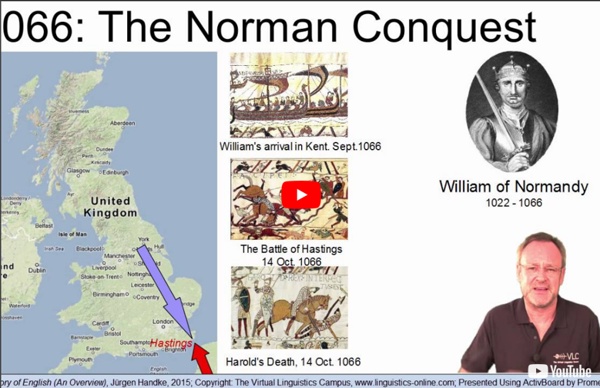



http://www.youtube.com/watch?v=Oz8tEPXI25A
Related: Word Formation Types • Great Britain • AMC : English LanguageMorph, Allomorph, Morpheme (323) Morph, Allomorph, Morpheme Linguistics 323 Morphology A morph is a phonological string (of phonemes) that cannot be broken down into smaller constituents that have a lexicogrammatical function. In some sense it corresponds to a word-form. An allomorph is a morph that has a unique set of grammatical or lexical features. Teenagers and UK culture Why bring UK culture to the teen classroom? We can introduce UK culture into the English classroom to help our students improve their English and at the same time learn about values and ways of doing things which may be different to theirs. Learning about life and culture in the UK can be very motivating as it brings the language alive for learners and creates a link between language and real life. See if you agree with these comments from teachers on teaching UK culture to their teenage learners: ‘We need to avoid reinforcing erroneous British stereotypes to our teenagers.
English language 'originated in Turkey' Modern Indo-European languages - which include English - originated in Turkey about 9,000 years ago, researchers say. Their findings differ from conventional theory that these languages originated 5,000 years ago in south-west Russia. The New Zealand researchers used methods developed to study virus epidemics to create family trees of ancient and modern Indo-European tongues to pinpoint where and when the language family first arose. Their study is reported in Science. A language family is a group of languages that arose from a common ancestor, known as the proto-language. Linguists identify these families by trawling through modern languages for words of similar sound that often describe the same thing, like water and wasser (German).
The crayola-fication of the world: How we gave colors names, and it messed with our brains (part I) “Who in the rainbow can draw the line where the violet tint ends and the orange tint begins? Distinctly we see the difference of the colors, but where exactly does the one first blendingly enter into the other? So with sanity and insanity.”—Herman Melville, Billy Budd Spectral Rhythm. Screen Print by Scott Campbell.
The History of English (BBC animation) - LinkEngPark Anglo-Saxon The English language begins with the phrase ‘Up Yours Caesar!’ as the Romans leave Britain and a lot of Germanic tribes start flooding in, tribes such as the Angles and the Saxons – who together gave us the term Anglo-Saxon, and the Jutes – who didn’t. The Romans left some very straight roads behind, but not much of their Latin language. The Anglo-Saxon vocab was much more useful as it was mainly words for simple everyday things like ‘house’, ‘woman’, ‘loaf’ and ‘werewolf’. Four of our days of the week – Tuesday, Wednesday, Thursday and Friday were named in honour of Anglo-Saxon gods, but they didn’t bother with Saturday, Sunday and Monday as they had all gone off for a long weekend.
Free English Morphological Analysis Service In English, a new word can be formed by adding a prefix or a suffix to a base word. An example is: 1. act + ive = active 2. in + active = inactive 3. inactive + ty = inactivity 4. inactivity + es = inactivities. Step 4 is inflectional. Stonehenge - Tour around Britain Stonehenge is a mystical place. Its stone circles are probably more than 4,000 years old. The huge stones come from an area about 30 km north of Stonehenge. The smaller stones possibly are from the Preseli Mountains in Wales, almost 400 km away from Stonehenge. Nobody knows for sure what the function of Stonehenge was. Maybe it was a druid temple.
25 maps that explain the English language English is the language of Shakespeare and the language of Chaucer. It’s spoken in dozens of countries around the world, from the United States to a tiny island named Tristan da Cunha. It reflects the influences of centuries of international exchange, including conquest and colonization, from the Vikings through the 21st century. Here are 25 maps and charts that explain how English got started and evolved into the differently accented languages spoken today. The origins of English 1) Where English comes from
EWG's 2013 Shopper's Guide to Pesticides in Produce™ EWG's 2013 Shopper's Guide to Pesticides in Produce™ Eat fruits and vegetables! The health benefits of a diet rich in fruits and vegetables outweigh the risks of pesticide exposure. Use EWG's Shopper's Guide to Pesticides™ to reduce your exposures as much as possible, but eating conventionally-grown produce is far better than not eating fruits and vegetables at all. Indo-European Languages The Indo-European languages are a family of related languages that today are widely spoken in the Americas, Europe, and also Western and Southern Asia. Just as languages such as Spanish, French, Portuguese and Italian are all descended from Latin, Indo-European languages are believed to derive from a hypothetical language known as Proto-Indo-European, which is no longer spoken. It is highly probable that the earliest speakers of this language originally lived around Ukraine and neighbouring regions in the Caucasus and Southern Russia, then spread to most of the rest of Europe and later down into India. The earliest possible end of Proto-Indo-European linguistic unity is believed to be around 3400 BCE.